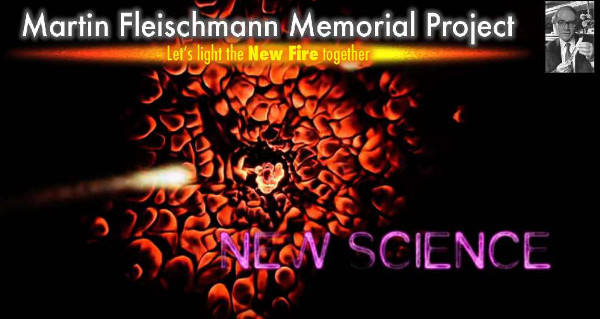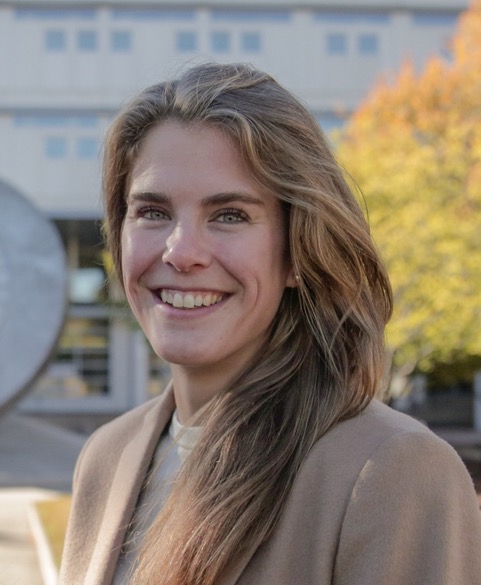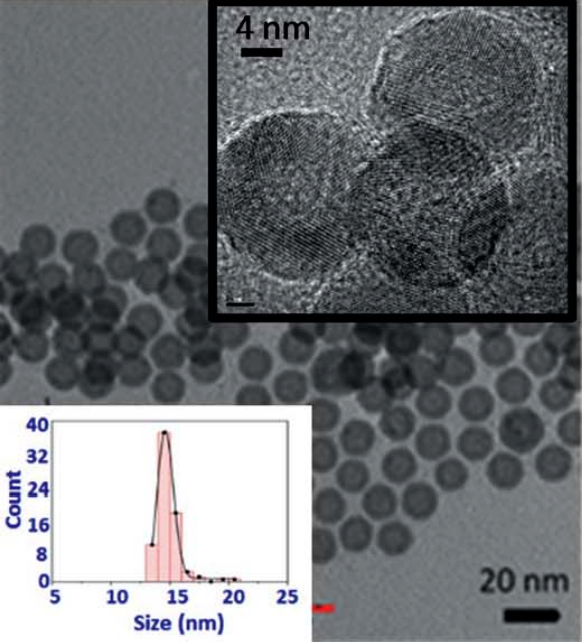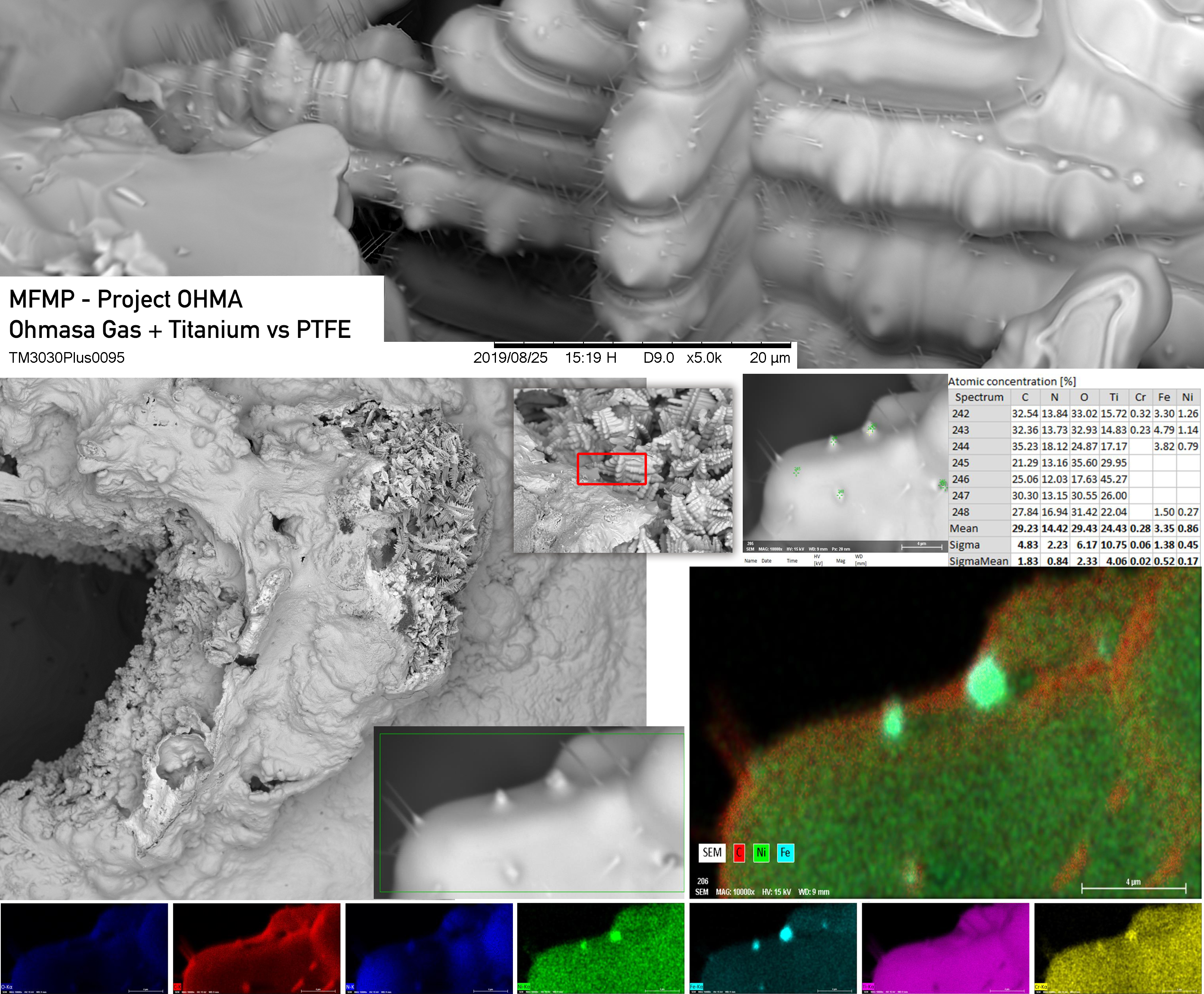IEEE-Madison September Newsletter

Madison Section Newsletter
Vol. 22, No. 9 Serving IEEE Members of South Central Wisconsin September2019
Newsletters are archived online at IEEE-Madison
Upcoming Meetings
LENR Replicator's Workshop
Date: Wednesday, September 4th at 11:00 AM - 1:00 PM
Sector67, Madison
LENR what the ....???
Date: Wednesday, September 4th at 5:30
UW-Madison, Helen C. White Hall
Optimizing power system operations
Methods to manage the impact of renewable energy on electric grids
IEEE-Madison IAS/PES Chapter
Date: Monday, September 9th
UW Engineering Hall
Tuning magnetic anisotropy in nanostructures for biomedical applications
IEEE-Madison Joint Section/ EMB18 Chapter
Date: Friday, October 25th
UW Engineering Hall
News/Announcements
Volunteers Needed! See below for more information
Past Meeting Reviews
Review of August EMB/Section Meeting
Upcoming Meetings Info
LENR -- What, again???
Sponsored Content: DLS EMC
Upcoming Meetings
September ECN Meeting
"LENR Replication Workshop"

- Wednesday, September 4th, 11:00 AM to 1:00 PM
- Bob Greenyer, Martin Fleischmann Memorial Project
- Location:
Sector67
56 Cory Street., Madison WI 53704 - Please Register at the IEEE-Madison event page.
Workshop: LENR -- Low Energy Nuclear Reactions -- may provide the world with limitless, inexpensive, carbon-free energy. Once called "Cold Fusion" and debunked as "Junk Science", LENR has recently become a hot topic. Recently, Google invested $10Million in an MIT Lab attempting duplication. The Department of Defense and US Government has patented several devices, one of which is being commercialized by Global Energy Corporation, a spin-off of DoD Researchers. NASA has osdered a compact Fission/Fusion reactor based on LENR technology. LENR has now progressed from fiction to fact as a number of scientists and engineers around the world work on the technology.
A number of organizations around the world are attempting to duplicate LENR reactions. Bob Greenyer, a volunteer with the Martin Fleischmann Memorial Project, has studied many of the approaches and will be available to talk about the details of replication. Bob has either been a direct part of replication efforts, or has visited replicators around the world. Come and join a discussion with Bob on replication efforts. His in-depth knowledge of the technology can help replication efforts get a fast start. Here are some of the efforts he has been involved with:
Dog-Bone: A MFMP replicaton effort to duplicate Andrea Rossi's LENR Reactor.
LION: An independent replication of a nickel-diamond deuterium fueled reactor.
LION-2: A duplicate of the LION Reactor.
Parkhomov: A Russian Research Lab's replication of Andrea Rossi's reactor.
Suhas Relkar: A High Power Ultrasonic/Electrical Discharge LENR fueled reactor.
OHMASA Gas: A Japanese Researcher's LENR Charge-Cluster generator exhibiting LENR reaction signatures.
Mizuno: A Nickel-Deuterium Reactor with detailed plans available.
Here are links to some of the replication efforts:
Google June 2019 Nature publication
Review of US Governmental LENR Patents
Bio: (See Bob Greenyer Below)
September Section Meeting
"LENR What the ...."

- Wednesday, September 4th, 5:30 PM to 7:00 PM
- Bob Greenyer, Martin Fleischmann Memorial Project
- Location:
Science Hall
550 North Park St., Madison WI 53703
Lecture Hall 180
- Please Register at the IEEE-Madison event page.
Talk: When you think you know how things work and then you not only witness, but recognize something as being so far from what is generally expected, that it shocks you to the core, what would you do? Would you let your scientific curiosity become a life-long search for the answer? Could you let it pass you by and carry on the mundane treadmill of the path often traveled? What would make a person choose to spend the rest of their life engaged in an activity that to many, would appear pointless and misguided?
Bob Greenyer talks about some of those people that not only knew they were seeing something special, but took it upon themselves to try and understand the observed effects, with an aim to give humanity, against the odds, new tools with which to take us collectively forward.
These people laid the groundwork for what is now becoming a hot research area, one which may define the next millennia and our species long term prospects.
Bio: Bob Greenyer studied manufacturing engineering at Brunel University, West London, during which time he also worked at the Electrical Engineering Department of Smithkline Beecham Pharmaceuticals (now GlaxoSmithKline Plc) at their largest UK factory which produced Augmentin and conducted primary research including that focussed on anti-bacteria and anti-viral solutions. During his time there, he updated all of the Electrical Engineering standards documentation, developed a portable system to monitor the over 100 electrical meters on site, helped specify a factory wide modern alarm system and developed a database to track maintenance on the sites 4000 industrial electric motors.
On leaving university he launched his then new media studio and developed cutting edge websites, animations and interactive solutions for a range of industries and FTSE 100 companies. Later he worked at the highest levels of one of the worlds largest international banks, developing all of their major client and investor facing media, analyzing complex data sets and presenting the resulting conclusions in words, graphs and moving images.
This skillset and operation was moved to India where it was intended that the operation would be scaled, however, a combination of the financial crisis and proceduralization of what once was stimulating problem solving led him to explore one of his other greatest passions, the science of energy.
In 2012, he took himself to South Korea to ICCF-17 the semi-annual conference of Condensed Matter Nuclear Science, where he and 4 other like-minded individuals set up the Martin Fleischmann Memorial Project to try and see if a new approach to science could stimulate more engagement in a maligned and poorly understood frontier of energy research.
Since then, he has had the opportunity to converse and work with some of the leaders in this field across the world and be a part of designing, conducting and analyzing a range of experiments both in house and conducted by third parties.
September IAS/PES Meeting
"Optimizing power system operations – Methods to manage the impact of renewable energy on electric grids"

- Monday, September 9th, 5:30 PM to 7:00 PM
- Dr. Line A. Roald, UW-Madison ECE Department
- Location:
Engineering Hall
1415 Johnson Street, Madison WI 53706
Room 2535
- Please Register at the IEEE-Madison event page.
Talk: How can transmission system operators ensure secure and reliable operation of the electric grid when renewable energy generation is uncertain? How can rooftop solar PV be a resource rather than a problem when managing voltage unbalance in distribution grids? To answer these and other questions related to renewable energy integration, new tools for power systems operations are required. This presentation will discuss our research aimed at developing such new tools. In particular, we will discuss how data-driven, optimization-based methods can help manage renewable energy variability and harness the flexibility available in the grid.
Bio: Line A. Roald is an Assistant Professor and Grainger Institute for Engineering Fellow in the Department of Electrical and Computer Engineering at the University of Wisconsin – Madison. Prior to joining UW Madison, she obtained her PhD at ETH Zurich in Switzerland and worked as a post-doctoral fellow at Los Alamos National Laboratory in New Mexico. Her research interests include optimization, probabilistic methods and data analytics for electric power systems.
October Joint Section/EMB18 Meeting
"Tuning magnetic anisotropy in nanostructures for biomedical applications"

- Friday, October 25th, Noon (TBD)
- Dr. Hari Srikanth. Dept. of Physics, University of South Florida
- Location:
Engineering Hall
1415 Johnson Street, Madison WI 53706
Room TBD
- Please Register at the IEEE-Madison event page.
Talk: Magnetic nanoparticles have been building blocks in applications ranging from high density recording to spintronics and nanomedicine. Magnetic anisotropies in nanoparticles arising from surfaces, shapes and interfaces in hybrid structures are important in determining the functional response in various applications. In this talk I will first introduce the basic aspects of anisotropy, how to tune it in nanostructures and ways to measure it. I will discuss resonant RF transverse susceptibility, that we have used extensively, as a powerful method to probe the effective anisotropy in magnetic materials. Tuning anisotropy has a direct impact on the performance of functional magnetic nanoparticles in biomedical applications such as contrast enhancement in MRI and magnetic hyperthermia cancer therapy. There is a need to improve the specific absorption rate (SAR) or heating efficiency of nanoparticles for hyperthermia and I will focus on the role of tuning surface and interfacial anisotropy with a goal to enhance SAR. Strategies going beyond simple spherical structures such as exchange coupled core-shell nanoparticles, nanowire, nanotube geometries can be exploited to increase saturation magnetization, effective anisotropy and heating efficiency in magnetic hyperthermia. This lecture will combine insights into fundamental physics of magnetic nanostructures along with recent research advances in their application in nanomedicine.
Bio: Hari Srikanth is a Professor of Physics at the University of South Florida in Tampa, FL. He received his Ph.D. in experimental condensed matter physics from the Indian Institute of Science. After postdoctoral research for several years, Hari joined USF in 2000 and established the Functional Materials Laboratory. His research spans a wide range of topics including magnetization dynamics in nanostructures, applications of magnetic nanoparticles in nanomedicine and RF devices, magnetic refrigerant materials, spin calorics, microwave materials and complex oxides with competing magnetic phases. He has over 250 publications and has given over 200 invited talks around the world. Hari has developed a short tutorial on nanomagnetism, enjoys delivering pedagogical lectures for a broad audience and especially interacting with students and early career researchers. Hari is a Fellow of the American Physical Society, with the citation mentioning his contributions in the field of nanomagnetism, and a Senior Member of IEEE. He is currently an Associate Editor for Journal of Applied Physics. Hari has been closely involved with the MMM and INTERMAG conferences for more than 15 years serving as Publication Editor, Publication Chair and on program committees. He is also a 2019 Fulbright awardee. Hari has been a short term visiting professor in Slovak Academy of Sciences (Kosice), Basque Center for Materials (Bilbao), Indian Institute of Technology (Bombay), Indian Institute of Science (Bangalore), Federal University of Rio de Janeiro (Brazil) and Immanuel Kant Baltic Federal University (Kaliningrad)
Review of Past Meetings
- Joint EMB/Section Meetings: Dr Giorgio Quer, distinguished lecturer for IEEE Communications Society, Sr. Research Scientist at the Scripps Research Institute, and Senior Member of IEEE, gave a great talk on how Machine Learning and lite AI can be used in Medicine to find patterns we have been previously unable to find. Massive amounts of data can be analyzed quickly using machine learning, like they used to analyse the data from a blood pressure study. Or how images of blood vessels in eyes can be quickly and accurately scanned for signs of eye issues. More information on Dr Quer's work, and the work of Scripps Research can be found at this link.
- IFEC Competition: The College of Engineering published a web page with links to videos and pictures from July's 2019 International Future Energy Competition. Have a a look-see here.
Upcoming Meetings
- LENR -- What?? Again??: A number of people have complained that the IEEE should spend less time hawking "Junk Science", or at least do it less frequently. However, given the challenges that the world faces with energy, I can think of nothing more important than a virtually limitless, inexpensive source of carbon-free (nuclear??) energy. If proven true, LENR will affect all of the world's engineering disciplines. The IEEE-Madison Section has invited Bob Greenyer to give two talks, one quite detailed as a "workshop" for people interested in details of LENR replication. The second one is an evening talk on campus aimed at getting young scientists and engineers an overview of LENR technology in an "inspirational" format. Remember, Edison was told the Electric Light Bulb would never work, the Wright Brothers Plane would never fly. Of course Galileo was imprisoned for supporting a Copernican view of the solar system with his observations. Physicists admit that "Ball Lightning" is poorly understood, but the LENR community regularly observes effects of ball lighning-like charge clusters.
Bob Greenyer is an astute observer of LENR replications from groups all over the world. He has observed things that seem impossible. He is also an avid proponent of "Open Science". All of his work for the Martin Fleischman Memorial Project is in the public domain and Bob freely shares his data. He is also a video-documenter of his work with over 100 YouTube videos. I admit, sometimes his enthusiasm makes him seem like Geraldo Rivera opening Al Capone's safe, but I think he is sincere in his enthusiasm.
Bob has journeyed to the US from the Czech Republic to work with co-researcher Alan Goldsmith analyzing LENR reactor samples with SEM/EDS tools. Bob is stopping in Madison on his way to Italy for the 2019 ICCF Conference and he will be bringing the samples to Madison en-route. Bob observed some very strange reactions the OHMASA Gas tests in Japan. For details of how he created one of the samples (tungsten subjected to OHMASA Gas torch and the PTFE) see this video. The tungsten "explodes"forming an interesting form of whiskers that reveal elements not present in the original materials that were somehow created in the reaction. Hot off the SEM/EDS "press" is the image below. Bob has observed many odd things that beg for scientific analysis. Listen to his talk, keep an open mind and ask questions!

News/Announcements
- Volunteers Needed: Are you interested in volunteering? If you are interested, please contact Nathan Toth, IEEE Madison Section Chair, at tothnj@ieee.org. Volunteering for IEEE Madison helps to grow a community of engineers, scientists, and technologists in the Madison area.
- IAS/PES Chapter Fall Event Update: Dan Ludois, Chair of the Joint IAS/PES Chapter sends this note:
"I've got the facilities at UW allow me roof access for my large scale wireless power transfer demonstration and tested the concept after simulation was complete. We have wound a 16 meter by 16 meter coil of #6 gauge litz wire (over a mile!) and built the transmitter exciter. Next we are looking for volunteers to help wind the receiver coils."
Stay tuned for more information! Potential roll out in the evening of Halloween or there about. Anyone up for self-lighting pumpkins?
IEEE Madison Leadership
- Section Chair – Nate Toth
- Section Vice Chair – Hugh Schmidt
- Section Treasurer – Tom Kaminski
- Section Secretary – Mike Stemper
- Webmaster – Nate Toth
- PES/IAS Chair – Dan Ludois
- PES/IAS Vice Chair – Eric Severson
- PES/IAS Secretary/Treasurer- Mike Stemper
- EMB Chapter Chair – Dennis Bahr
- Life Member Affinity Group Chair – San Rotter
- Life Member Affinity Group Vice Chair – Charles Cowie
- ECN Chair – Tom Kaminski
- Young Professionals Chair – Nate Toth
- Members at Large: Clark Johnson, Craig Heilman, Dennis Bahr, San Rotter.
Membership Upgrades
Those interested in upgrading their IEEE membership level should be aware that the process has been streamlined with much of it on-line. The application process can start with your application as described on line here. You will have to provide the names and IEEE numbers for three Senior Members in your field. The Madison Section Chair ( Nate Toth at tothnj@ieee.org) can help, or attend the informal networking portion of the monthly Section meetings to meet the Section Board members and discuss your intention to elevate.
About IEEE
The Institute of Electrical and Electronics Engineers or IEEE (read Eye-Triple-E) is an international non-profit, professional organization dedicated to advancing technology innovation and excellence for the betterment of humanity. IEEE and its members inspire a global community through IEEE’s highly cited publications, conferences, technology standards, and professional and educational activities. It has the most members of any technical professional organization in the world, with more than 300,000 members in around 150 countries. The IEEE consists of 38 societies, organized around specialized technical fields, with more than 300 local organizations that hold regular meetings. Discover what IEEE Member Discounts can offer you. The Member Discounts portfolio consists of insurance products and programs for the home, office and travel, all at excellent group rates and reduced pricing. Visit IEEE Member Discounts to see what’s available in your location and enjoy the savings. For more information, please visit: IEEE.ORG.
Sponsored Content




